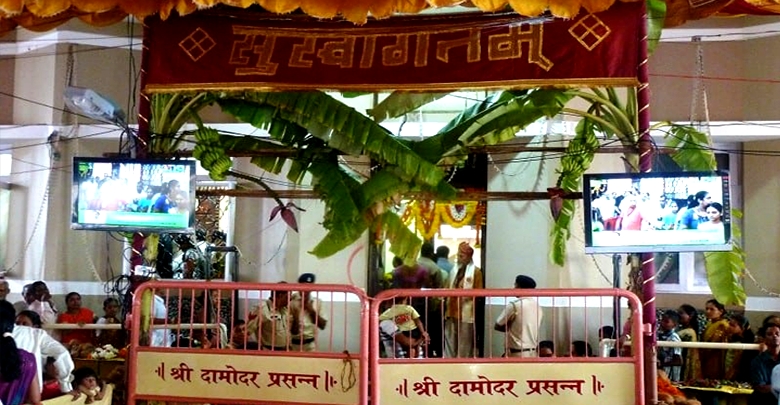It’s a grand affair and one that is more than a century old. We’re talking about the Saptah festival in the port city of Goa – Vasco. The festival is celebrated at the Damodar temple located on Swatantara Path every year at the beginning of Shravan, leading up to Ganesh Chaturti. The festival is the only big one in Vasco and is a major attraction for people from all over the state.
Vasco comes alive with the Saptah festival celebrations
Vasco is a transient town owing to the fact that besides being a port town, there is accessibility by air and even rail. The town has its own railway station and the Dabolim airport is also located nearby. Normally, Vasco wears a very quiet and sedate look but when it’s time for the Saptah festival, the whole place is transformed. Thousands throng to the port town to pay their respects and also buy different wares from the multitude of stalls erected for the festival.
Saptah means ‘7 days’ and this is how long the festival is celebrated for in the temple. However, the stalls that sell a variety of items from household items to clothing and footwear can stay up for at least 15 days if not more.
The History of the Damodar Saptah festival
The Saptah festival has been celebrated in Vasco for more than a century now. As the legend goes, in 1898 there was some kind of epidemic in the city. Given that health facilities were not easily available and quite poor, the locals turned to Lord Damodar, an incarnation of Lord Shiva for help.
It is told that they went to the Zambaulim temple (near Margao) of Lord Damodar and brought a coconut as prasad which was placed in the Damodar temple in Vasco. The first installation is believed to have been in the old Mata High School. Between their fervent prayers and the installation of the coconut, the epidemic died down.
In those days, a leading business family from Vasco, allowed the idol of Lord Damodar to be installed in part of the residence. This make-shift temple is where the celebrations begin and it still remains attached to the original house even today.
How the Saptah festival celebrations unfold
The festival starts with the main pooja being offered at the Old Mata High School. As is done annually, a member of the Joshi family installed the ‘shreephal’ (holy coconut) in the temple. This marked the beginning of the festival. The coconut that is used in the previous year’s Saptah festival celebrations is taken around the town and then released into the sea at Kharewada.
A specially selected person carries the sacred coconut. A troupe of dancers goes accompanies him, visiting the residences of prominent citizens in the town. The performance of the troupe is called as Gopalkala by the locals and is a sight to behold in the pouring rain. Not only do the dancers get drenched in the rain but more water is thrown on them by the residents that they visit.
Throughout the week, there are also a variety of religious and cultural programmes held. And of course, there is the shopping which draws crowds from near and far. Stalls line the streets of Vasco, from the main avenue to the by lanes and people can even be seen shopping late into the evening. The Saptah festival is truly a festival to behold and visit when celebrated.
Information credit
http://www.goatourism.gov.in/festivals/hindu-festivals/192-vasco-saptah
http://goatourismtravels.com/events-festivals/damodar-saptah/#.W303ZOgzbIU
http://www.navhindtimes.in/the-grand-annual-vasco-saptah/
ItsGoa/AUG/KDGP


